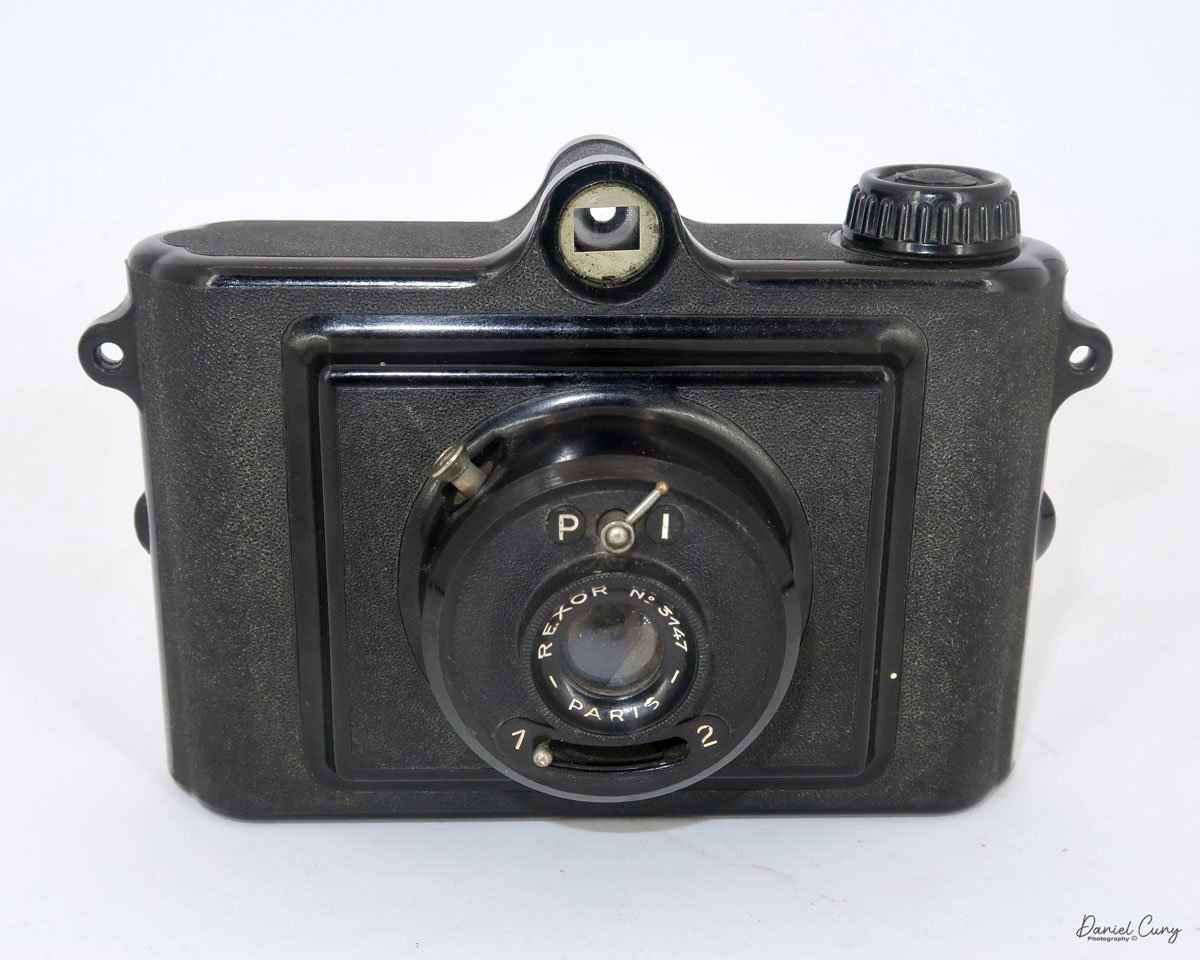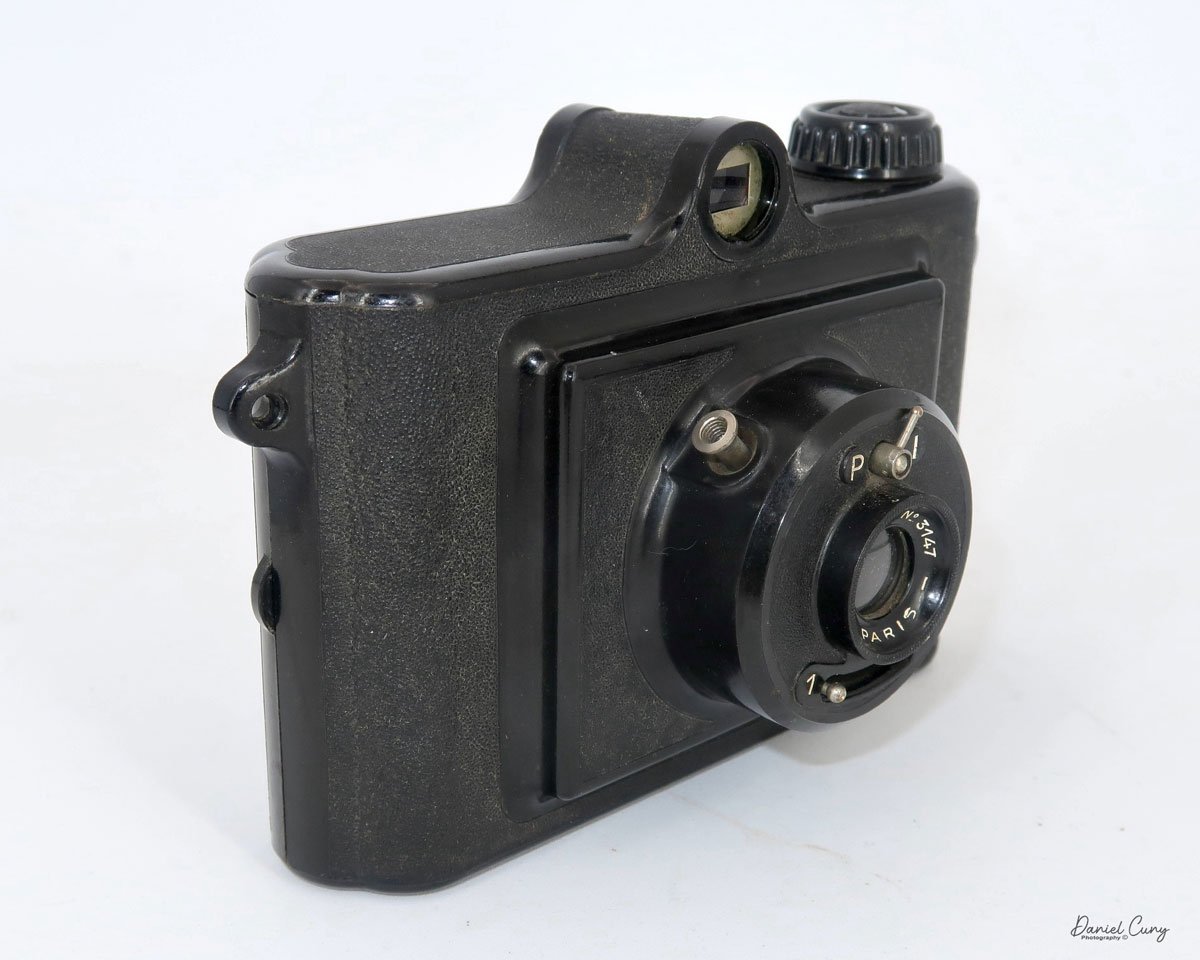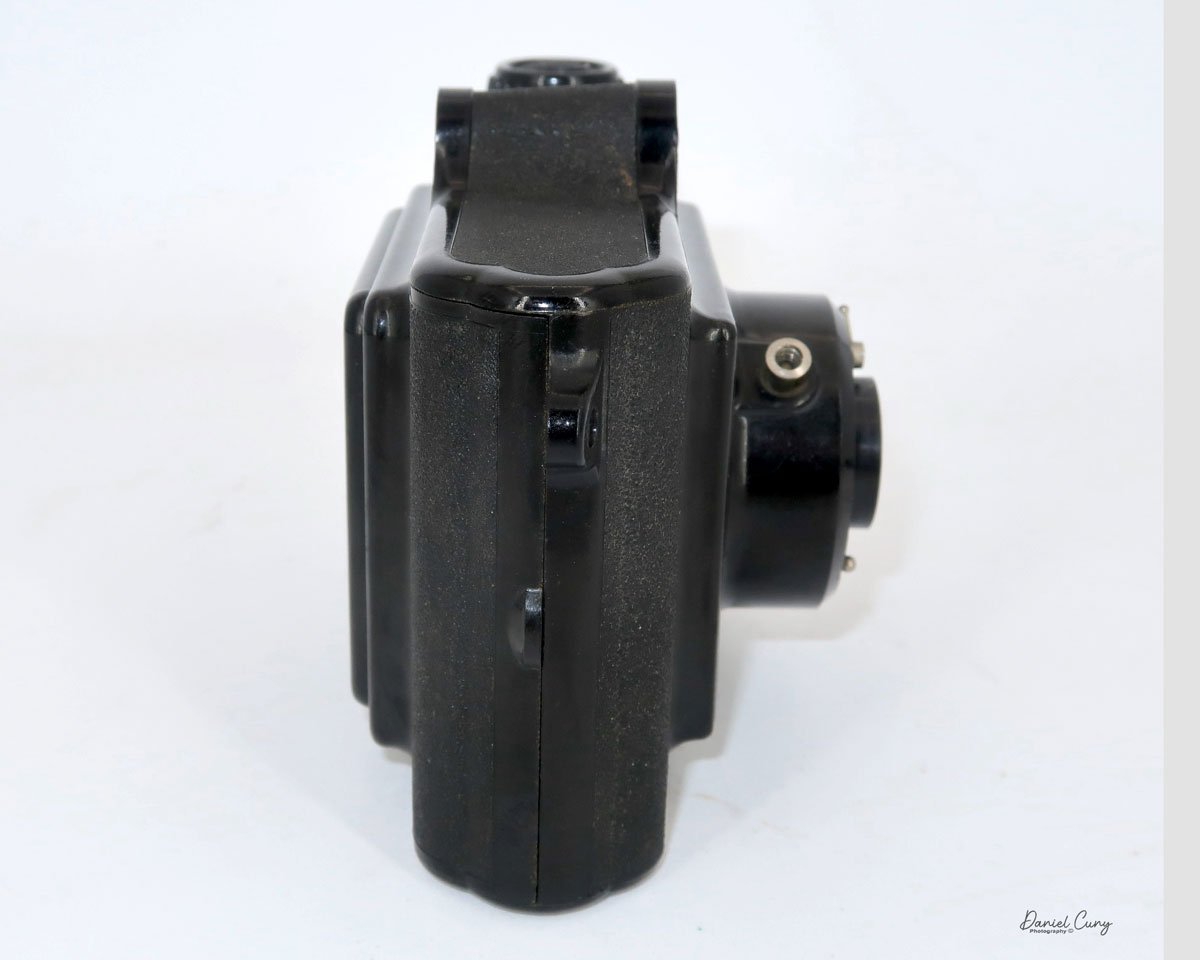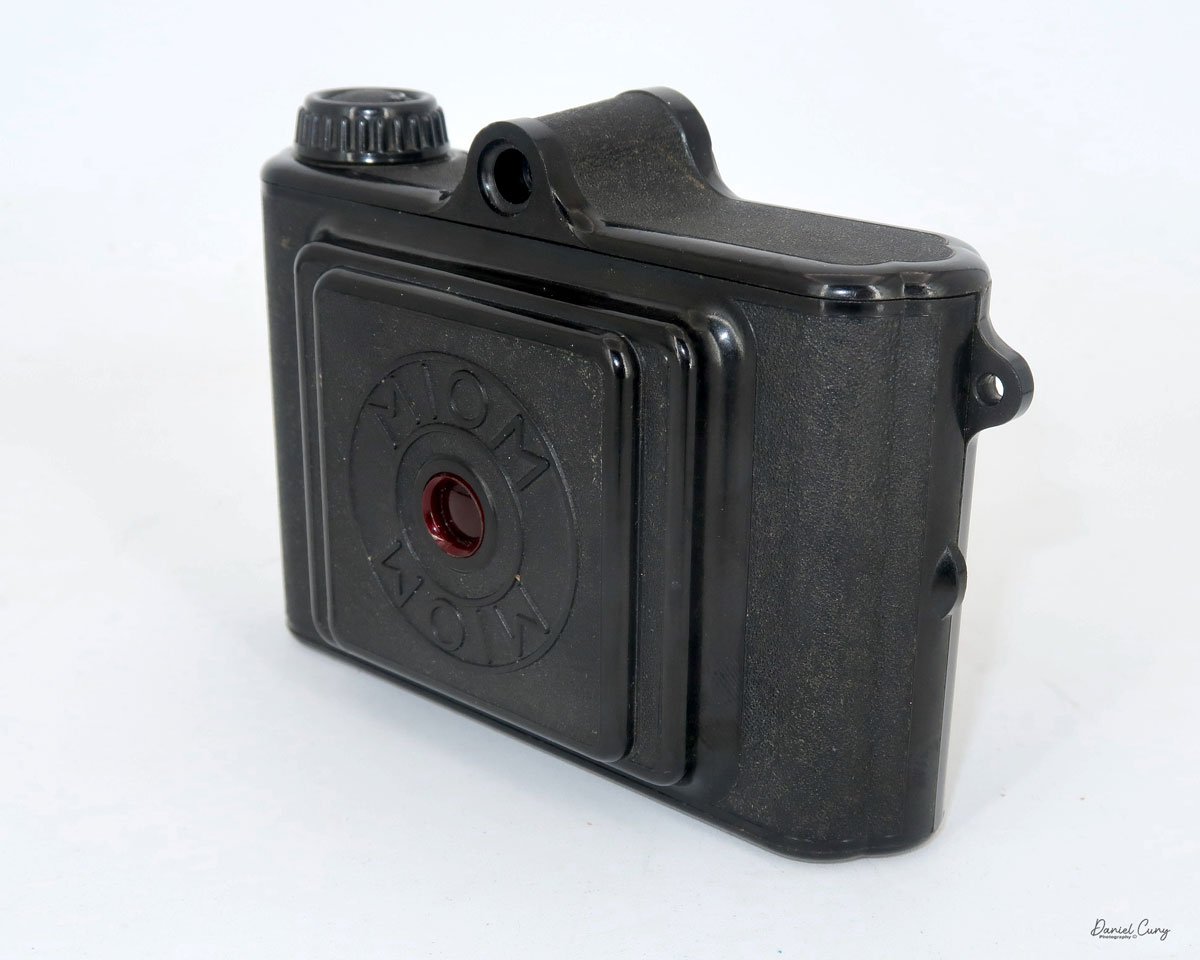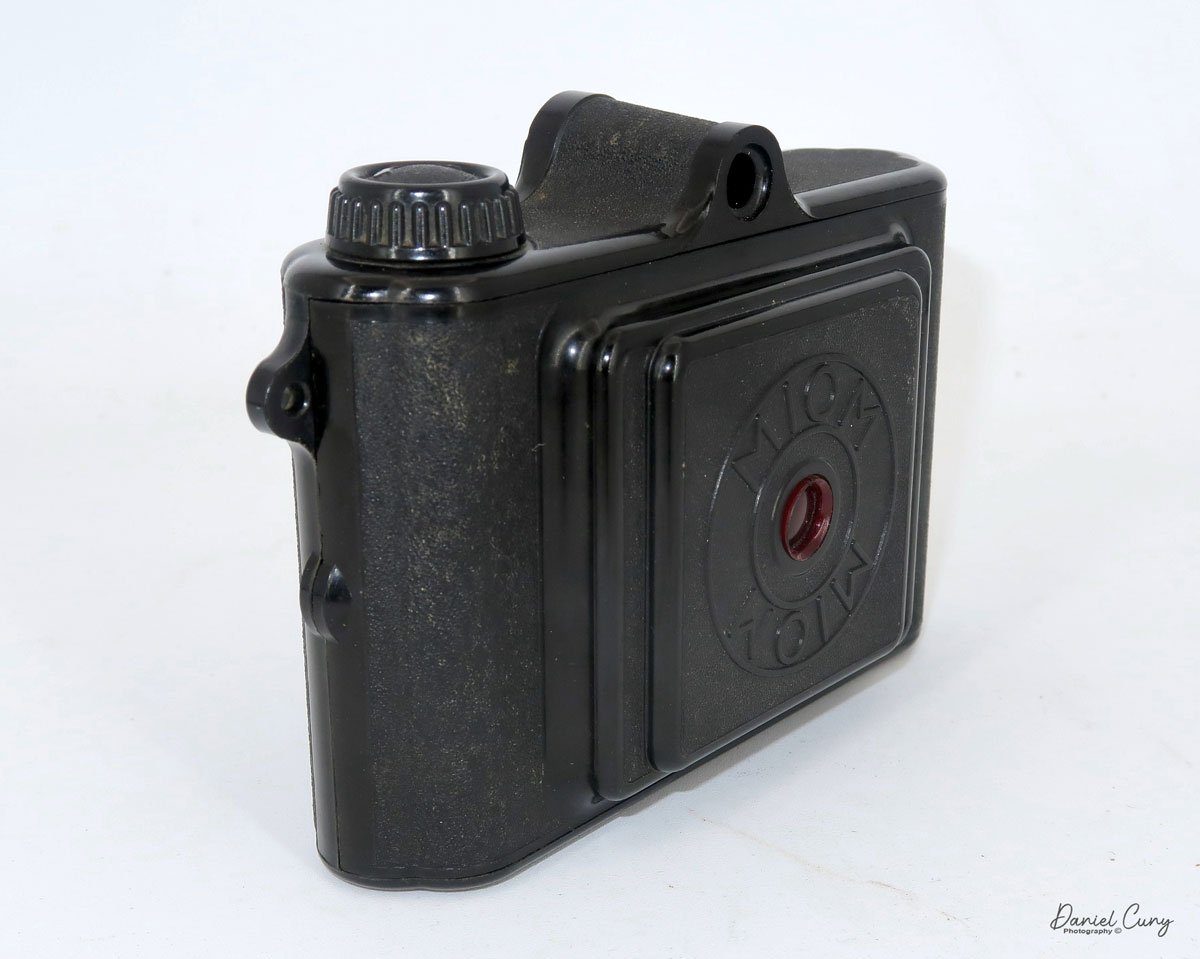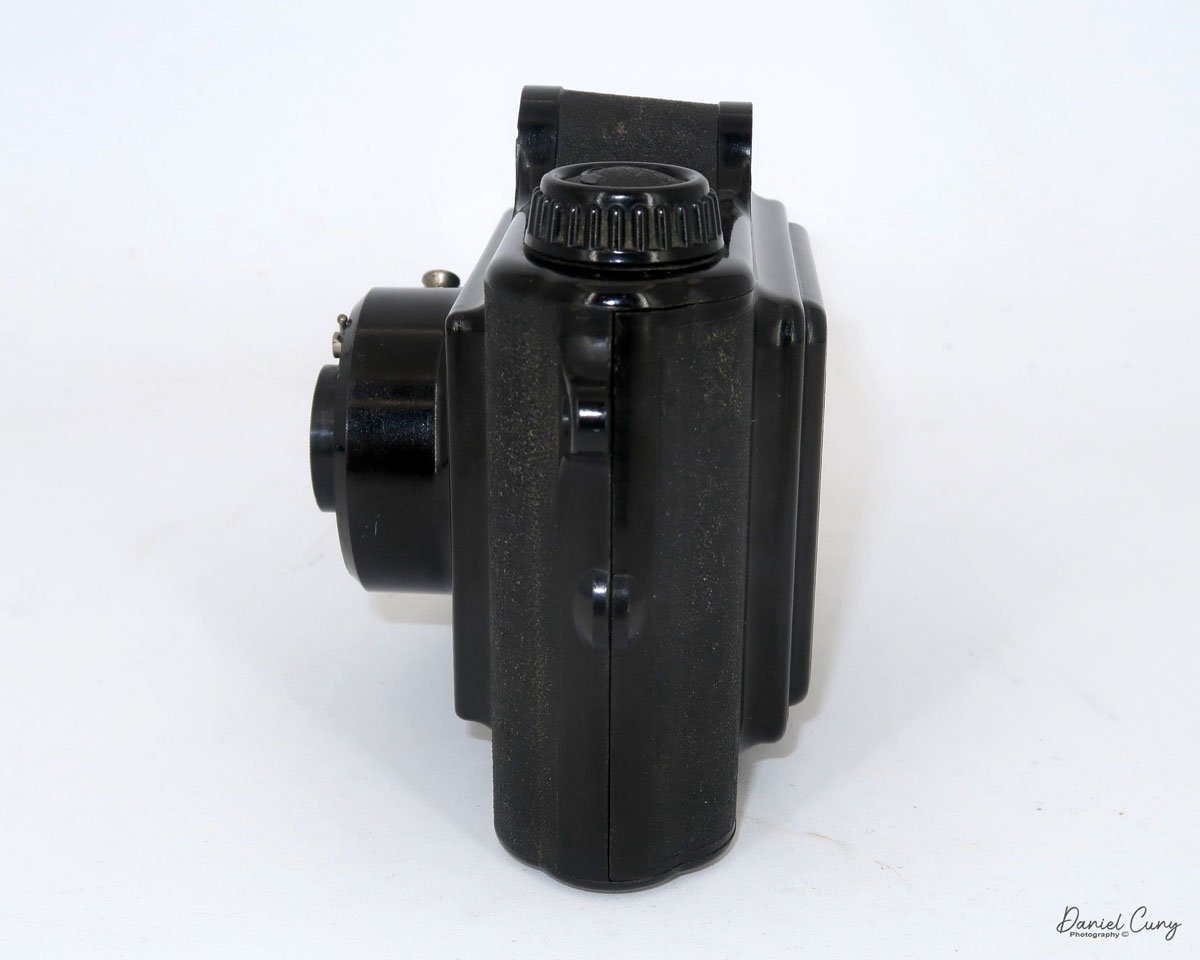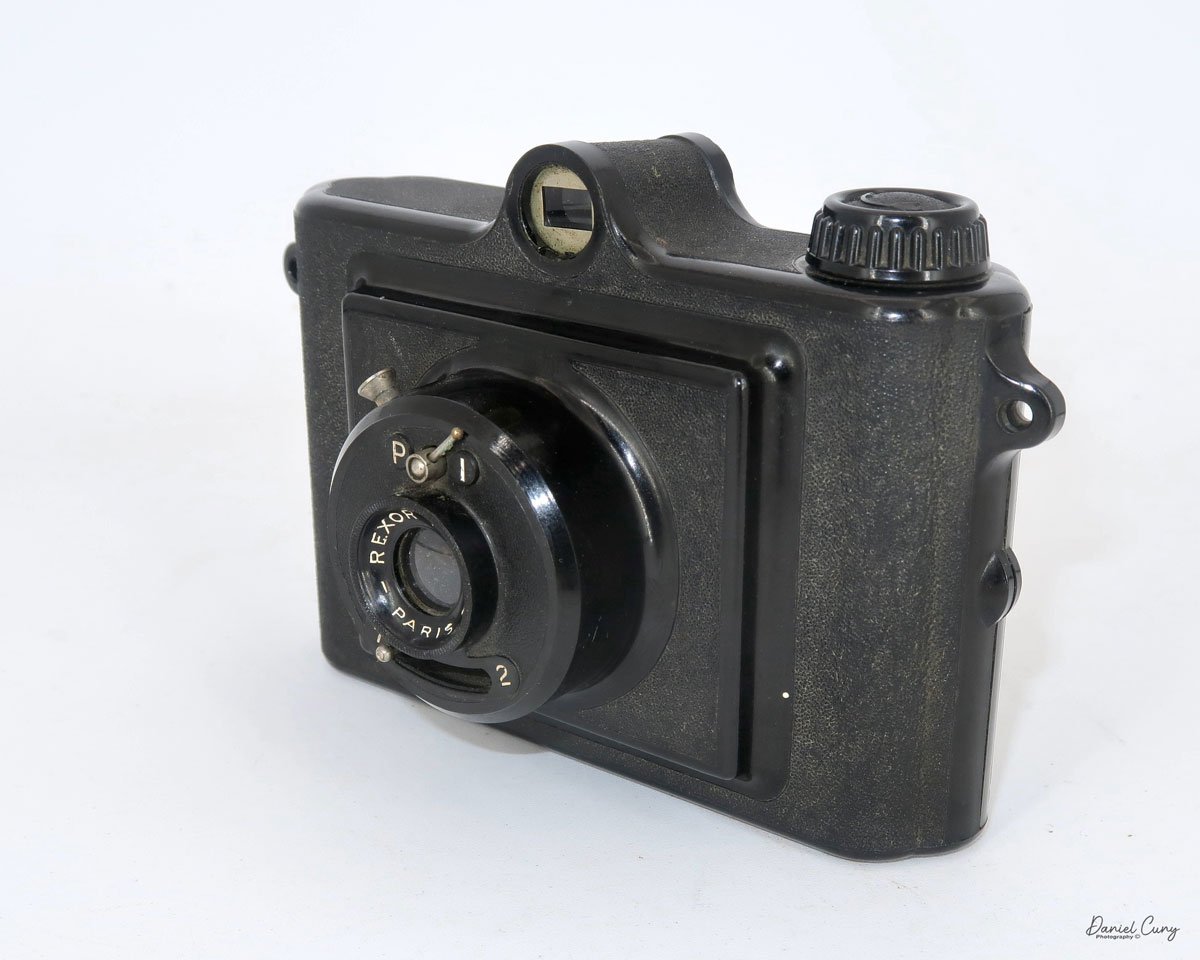My Merten Merit Box camera.
We're three weeks into February, which I've deemed Box Camera Month for my blog posts. I purchased this camera about five years ago at a camera show I attended in Kent, WA, a suburb of Seattle. This show, which is a gathering of camera enthusiasts and collectors, is coming up again in early April. It's a great opportunity to see a wide variety of vintage cameras and photography equipment. If you're in the Seattle or Portland area, please stop in. I plan on having another few tables to sell off some of my collection.
Getting back to the camera of the week, I had previously owned the Merten Merit Box camera many years ago. Still, it wasn't nearly as good of condition as this one. It was missing one of the outer viewfinders, and there were many chips in the Bakelite, so I was pleased to see this example at the Kent camera show, and it was at a very reasonable price. One of the things that initially drew me to the camera was the color of the camera. It has a dark brown color with a smooth texture throughout the camera, with the exception of the faceplate, which has a pebble finish to the Bakelite.
The other nice thing about this camera is that Merten made two different models. The one I had previously was a 6x4.5cm format camera on 127 film. This camera is a rare version as it takes 120 films and produces a 6x9cm format image, so the negative is larger, and the film type is a lot easier to purchase. The other nice thing about this camera was the handle was intact. Due to how the camera is built, I have seen many examples where the strap is broken or missing. This camera has very few chips in the Bakelite, and the strap is intact and in overall great condition. The shutter also works.
Since all the stars are aligned with a 6x9cm format camera and a working shutter, the camera takes 120 film. I figured it was time for me to take the camera off the shelf, load film into the camera, dust off and clean the lens, and take a walk around the neighborhood to take photos with this wonderful photo-making machine.
The Company:
French ad for Merit Box
In 1906, the Merten brothers Ernst, August, and Emil founded the Gebrüder Merten Gummersbach (GMG) company in Windhagen-Gummersbach, Germany. They started manufacturing electronic installation components. In 1926, they focused their attention on manufacturing plugs and sockets, which is where their business grew.
In the early 1930s, Mertens used their Bakelite presses for various purposes, such as producing equipment for laboratories and, yes, in 1933, even producing a series of cameras for the rapidly growing photographic market. These were the only cameras produced by Mertens, and they turned their focus back to the electronic field.
By 1985, Mertens had grown to the point where they were producing electronic accessories items for the commercial trade, and by the year 2000, intelligent devices were added to their portfolio of electronic products. Merten's products for smart buildings are available in more than 130 countries, where they produce electronic products for residential buildings, offices, public buildings, hotels, schools, hospitals, and businesses. 100 years after they started their business, Schneider Electronics purchased Mertens in 2006.
My Camera:
My Merten Merit Box Camera is 4.5" tall, including the leather strap, 3.5" wide with the winding knob 5.5" deep from the front of the lens to the back of the camera. The camera weighs 1 lb, 1.6 oz without film loaded into the camera. The camera is a typical box camera with two different viewfinders, one for vertical images on top of the camera and one for horizontal images on the right side.












The Merit Box camera has a Rodenstock lens, around 80mm, and the aperture is F11. There are two positions for the shutter, which is set by a toggle arm below the lens, either a line for instant photos or a round circle setting for timed exposures. There is an option to screw in either a self-timer or cable release just above the shutter release button, which is located just to the right of the lens as you're preparing to take a photo. There is also a sliding bar on top of the camera, which allows for three different aperture settings. When the sliding bar is in the lowest position, the aperture is F11. Then, slide the bar up to the following setting, F16, and all the way to the top would be F22.
On the back of the camera is the name of the camera embossed into the Bakelite, the red window to tell the photographer which frame they are on, Germany, Film B-2, which is an Agfa reference to 120-size film, and finally, the film format 6:9.
One of the very unique features of the camera other than the beautiful dark brown color is the interwoven strap on top of the camera. The strap or top handle doesn't come off. Instead, it has two interlooped sections that allow the strap to lengthen as you take the front off the back of the camera to load film. This makes it more difficult to load the film as you need to deal with both the front of the camera and the rear when you load film into it. It's not difficult to deal with, but at the same time, it's more than most people are used to when loading a simple box camera, mainly used for the less professional photographer.
There are two locking mechanisms on each side of the camera to load the camera. Rotate the knobs counterclockwise to unlock the back from the front. Then, you'll need to slide the strap apart to allow the camera's front and back to be removed from each other. On my camera, the strap holds the two pieces together as the strap is somewhat tight and stiff. Once you slide the two strap pieces apart, the front and rear of the camera open easily; from there, you can load the film into the camera.
Once I put a roll of film into the camera, I attached the front to the back of the camera. I turned the locking knobs clockwise to lock the two together and slid the strap back to the shorter position so it would hold the front and the back together a bit better. It could quickly be done if I needed to make the handle a bit longer to hold the strap as I used the camera.
The one thing I noticed when I went to load the film into the camera was the winding mechanism didn't engage with the film spool very well. I needed to press the winding knob, and I was turning the knob to advance the film. The flat end of the winding mechanism that fits into the spool didn't seem long or thick enough to fit tightly into the film spool. The whole winding mechanism seemed very wobbly. I did try t tighten the screw, but that didn't help. The camera is almost 100 years old (92 years), and I'm guessing that it's just worn a bit, but I doubt it's been used very much because the strap is in great condition and still intact.
My Results:
Now that I had wrestled with the strap and held both the front and rear of the camera in my lap to load the camera with a roll of 120 films, it was time to take a walk through the neighborhood to see the results from this beautiful brown bakelite camera from the early 1930s. Here are some of the results from my walk.
Conclusion:
The one thing that I struggle with when using these simple box cameras is the close distance required to get a somewhat sharp image. Since it was somewhat sunny outside, I figured that using the sunny 16 rule would be my rule of thumb for exposures.
For those unfamiliar with the Sunny 16 rule, you use the shutter speed closest to the ASA, or as it's known now, ISO in your camera. (Yes, I'm old school.) If it's sunny outside, you use f16. I had ASA 125 film in the camera and figured the shutter speed was close to that, so I put the aperture setting in the middle setting for my exposures outside.
I photographed my daughter and her dog, Bean, initially about 4 to 5 feet away. Then I took a step back, and the photo still was out of focus, as were many of the images I took between 4-6 feet from the subject. The one image that is nice and sharp is the more scenic photo of one of the neighbors' houses, which turned out very well. My guess is the best minimum distance is 8-10 feet away, looking at some of the results I achieved.
Thank you for taking a few minutes from your day to look over this unique and simple camera from about a century ago. It was fun to take it off the shelf and use it as it was intended. The results are the best, and my guess is that due to several different reasons, the Merten Merit Box camera wasn't a huge seller during its time.
Until next week, please be safe.
















































